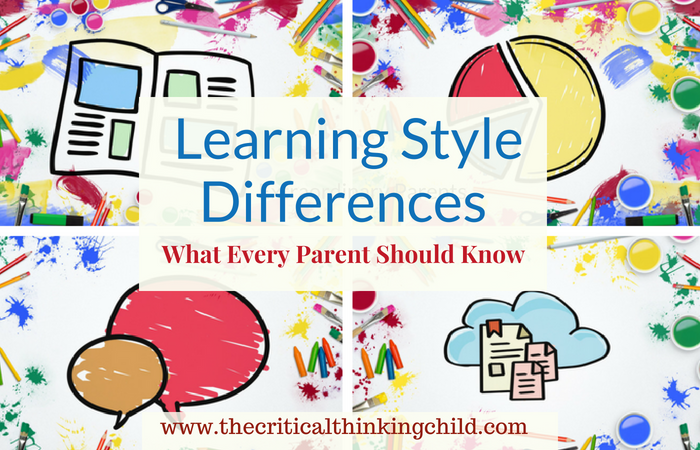Do you know how your child learns best? If so, you can use this information to help your child think critically and learn more quickly. Here’s some information about each of the four learning styles: literary, analytical, active, and creative.
Every child is unique, and so is the way they learn. When you uncover your child’s learning style, it gives you the tools you need to help them succeed in the classroom – no matter what their age. If you don’t know your child’s learning style, you can find out by taking this brief quiz.
But knowing is only half the battle. It’s what you do with the information that truly matters. Here’s some additional information about each of the four learning styles (literary, analytical, active, and creative) and what you can do to help your child succeed.
The Literary Thinker
If your child’s favorite activities include reading, telling stories, and solving word searches, they probably tested as a literary thinker. Known as “the perfectionist” and “the bookworm,” literary thinkers have gifts for reading, writing, and storytelling.
Digging deeper, literary thinkers often have a strength and affinity for organization, even at an early age (think of children who re-organize the shoe closet or make sure the plates are put away). These children can be seen developing their own systems of organization, which is a great characteristic to nurture because it will lead to strong leadership skills down the road.
You can encourage your literary child by reading to them, having them read to you, and helping them create of their own stories that nurture their creative spirits. Allow literary thinkers to carry a book everywhere; stories are comforting to them and help them navigate the world.
The Analytical Thinker
Known as “the scientist” and “the investigator,” analytical thinkers enjoy open-ended problem solving and tend to enjoy puzzles and brain teasers. These children are witty and think quickly on their feet. This means that they may be guilty of talking back to their teachers with a witty reply. They’re also the children who constantly ask questions. More than any other type, they want to know why.
Here’s a hint: turn the question back on your child and have them figure out why things happen. Analytical thinkers enjoy thinking in systematic ways, so activities like logic puzzles and projects are great for building their critical thinking skills. Real-world experiences are also incredibly engaging for analytical thinkers; give them a problem that is happening in the world and ask them what they would do to solve it.
The Active Thinker
Active thinkers are also known as “the social butterflies” or “the great debaters.” These children learn best by active engagement, often with their peers or adults. They also learn through hands-on experiences, and in this way are similar to one of the more traditional learning styles, kinesthetic learners.
The best way to reach these children is to put them in groups with their peers; they learn best by bouncing their ideas off others and may be natural leaders in their classrooms. Pose complex problems to them and have them talk to others about how to solve it. A way to challenge active thinkers even more is to assign them a debate topic with the side they don’t agree with and see if they can defend that side and take other perspectives.
The Creative Thinker
Finally, there is the creative thinker, also known as “the artist” or “the collector.” These children are very independent, and are able to create their own worlds in their imaginations. Because of this, they can sometimes seem like lost in their thoughts. They are very driven by their collections of treasures and may create artistic pieces with them or just imagine alternative uses.
A great way to engage creative thinkers is to present them with an everyday object like a pencil and have them think of all the creative things a pencil could also be (eg a mustache, a flower stem, a drumstick). Out of the box thinking is key for creative thinkers, and while they don’t directly question authority like the analytical thinkers, they can be drawn into their independent projects to find answers to questions they have about the world.
Nurture the arts in creative thinkers by making sure they can pursue any natural interests in music, dance, or crafts, either in a camp or class setting or just independently at home.
Multiple Learning Styles and additional Resources
Of course, it’s unlikely that your child is entirely one learning style or another. Odds are, one of the four is their strongest method of learning, while the others play a less vital role.
As your child grows, they will need to learn how to stretch their thinking and adapt to multiple learning styles. The best way to help your child is by providing opportunities for them to stretch their boundaries. One place to start is with our Critical Thinking Workbooks.




Trackbacks/Pingbacks